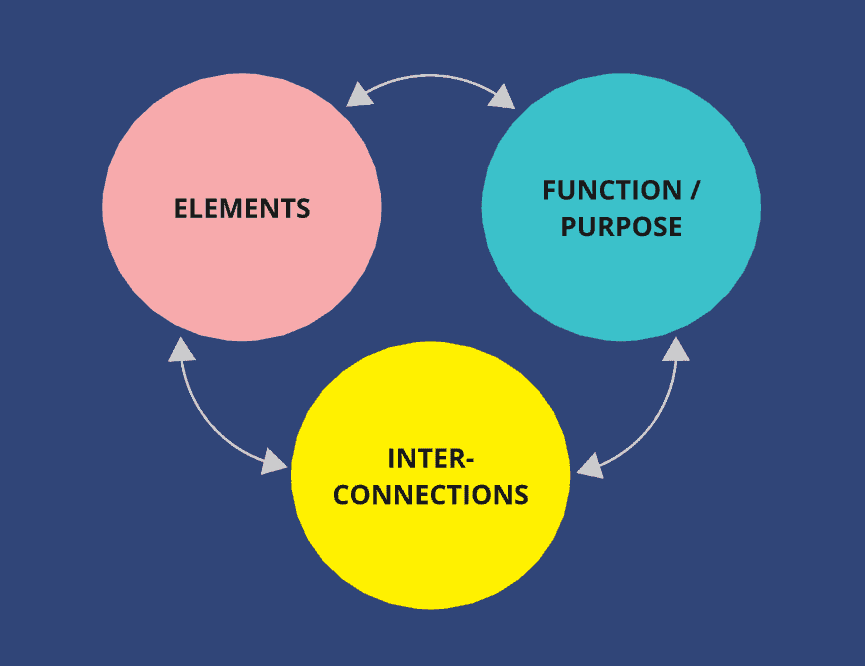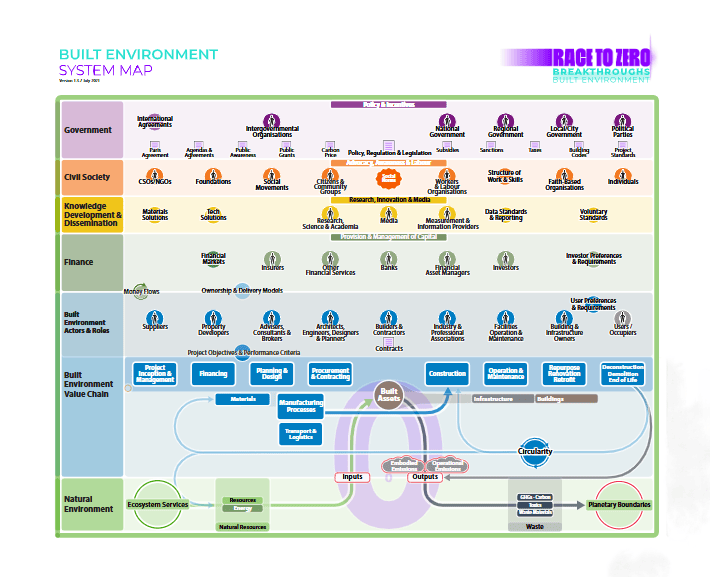Systems Change
Our approach to addressing the climate emergency is falling short. We need radical transformation of the systems we operate within to achieve not only a sustainable built environment, but one that positively restores and revitalises the world around us. We must challenge our assumptions and business-as-usual practices, and enable a dramatic paradigm shift that reconciles humans and the rest of nature.
What is a System?
A system was defined by pioneering systems thinker Donella Meadows as “an interconnected set of elements that is coherently organised in a way that achieves something… it must consist of three things:
- Elements (individual parts);
- Interconnections (relationships between elements); and
- A function or purpose (what the system achieves, determined by its behaviour)”.
Where you draw the boundary around a system impacts how you define it and what it includes – it can be smaller in scale (e.g. a beehive, an organisation) or very large (e.g. the global economy), and you will find many smaller systems nested within broader ones.

What is Systems Change?
Systems change refers to the process of reconfiguring the components and interactions within a system in order to transform it into a new system with significantly different behaviours. Systemic change is needed in the face of complex climate, biodiversity, and equity challenges as it focuses on interconnections and the root causes of problems, rather than addressing their symptoms in isolation. This involves shifting the underlying structures, rules, relationships, mindsets, power dynamics (etc) within our current system towards new outcomes and goals, usually involving diverse stakeholder participation and collaboration. Systems change is focused on transformational, as opposed to incremental, changes. However, transformational and incremental shifts when taken together can create the right enabling environment to transition nearly all major systems.
Leveraging change involves understanding where in the system you can most strategically take action to address any given challenge. Many of the ways we currently try to change systems for sustainability are of lower leverage and unlikely to last. Creating long-lasting and transformational change is most effectively driven by shifting the mindsets, goals, and paradigms that govern the system. The Three Horizons Model is a useful framework for creating a shared vision of a new system and how we might move towards it.

The programme has been transformative for me and given me a renewed sense of agency.”
Giulia jones, associate director – esg projects, mapp
Systems thinking involves shifting our focus away from individual elements of any system, to instead focus on how those elements are organised and relate to each other as a whole. It often involves moving from observing events or data, to identifying patterns of behaviour and understanding their underlying drivers, recognising that interactions are ever-changing, dynamic, and non-linear.
What is the Built Environment’s Role?
Progress has been made within the built environment sector, but the scale and pace of change is inadequate compared to the scale of the climate and ecological crises we face. The majority of industry continues to operate with a compliance or ‘meeting regulation’ mindset. To reach just and regenerative goals, the built environment value chain must unite in taking bold and decisive action towards a shared vision of systemic transformation. The Race to Zero Built Environment System Map is a useful tool to explore and visualise the individual and collective roles of different stakeholders, and to understand how different parts of the built environment system connect.

